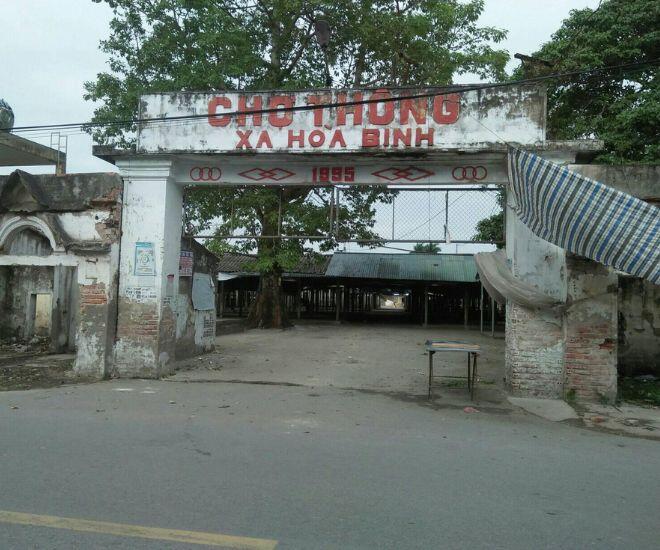
The origin of Cho Thong market remains a mystery, with no exact records of when it first came to be. However, according to the elders in the area, the market has existed for at least a hundred years and was once known as a “provincial goods market.” It served as a bustling hub of commerce not only for the locals of Thai Binh but also for traders from neighboring provinces such as Nam Dinh, Thanh Hoa, Hai Phong, and Ninh Binh. Cho Thong market has witnessed the ups and downs of history, especially during the resistance war against the French. When the French swept through and set up camp in the area, the market had to relocate three times, first to Loc Quy village, then to a riverside area, and finally to a field in Hoa Binh commune, before returning to its original location around 1970-1971, where it has remained to this day.
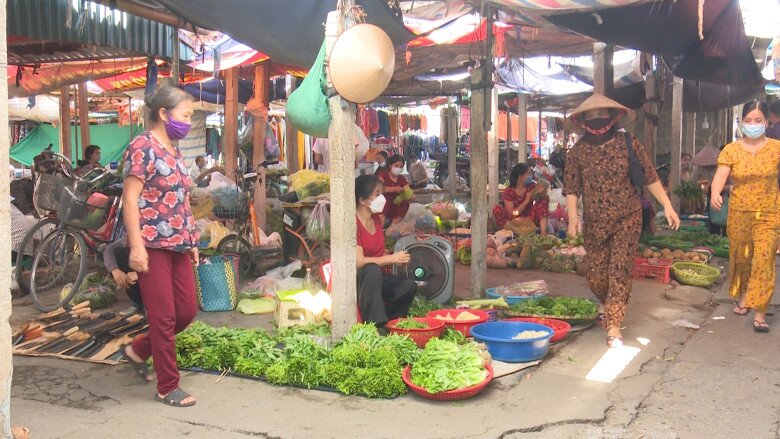
In the past, Cho Thong market was only open for six main sessions each month, falling on the 3rd, 13th, 23rd, 8th, 18th, and 28th of the lunar calendar. In recent decades, to meet the growing demands of the people, the market has added extra sessions on Sundays, making trading more convenient. On these main session days, Cho Thong bustles with a wide range of essential goods for the local population’s daily lives and production. Traditional farming tools such as nong nia (a type of basket), quang ganh (a carrying pole), rổ rá (baskets), plowshares, and hoes are available, alongside fresh produce, vegetables, grains, fabrics, and especially various types of seeds, all of which are homegrown and handcrafted by the local farmers.
Even on the less busy days between the main sessions, the market still operates, mainly selling food, vegetables, and ordinary snacks to meet the daily needs of the locals.

One of the distinctive features that made Cho Thong market famous in the past was its role as a center for trading buffaloes, cattle, pigs, chickens, and various other types of livestock, making it one of the largest livestock markets in Thai Binh province. Buying and selling buffaloes and cattle here involved more than just a transaction between a buyer and a seller; it also required the presence of intermediaries known as “buffalo drivers” or “cattle drivers.” Buffaloes and cattle from households in the district, the province, and even from distant provinces like Ninh Binh and Thanh Hoa, or from the upland regions, were all brought to Cho Thong market on the main session days for exchange. The market had a large open space dedicated to gathering the animals, where buyers could carefully examine their physique, even testing their plowing strength on the spot. The saying, “A buffalo is the foundation of a farmer’s wealth,” reflects the importance of choosing the right livestock, leading many buyers to spend several market days considering their options before seeking the help of the “buffalo drivers” or “cattle drivers” for price negotiations.
Today, while Cho Thong market no longer trades in buffaloes and cattle, the livestock section remains a vibrant hub for pigs, chickens, dogs, cats, rabbits, pigeons, and more. It attracts not only breeders but also young people and children who come to admire and purchase their favorite animals.
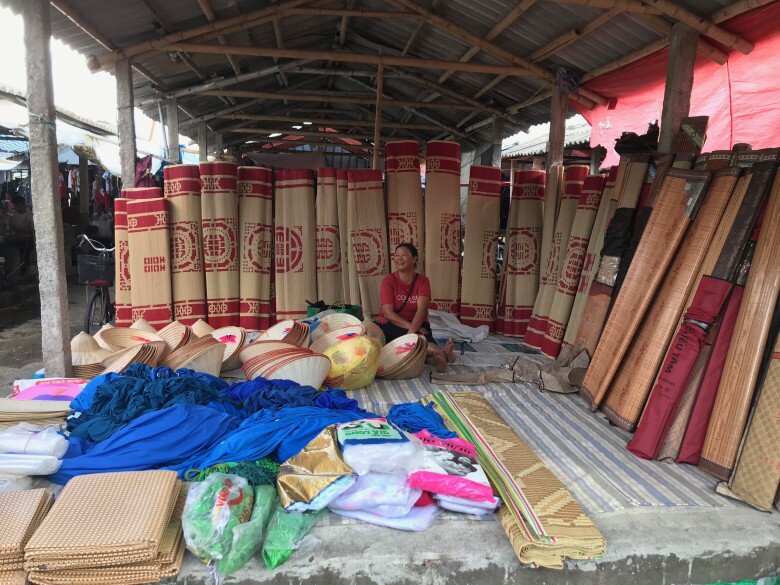
Despite the improvements in rural life and changing consumer demands, Cho Thong market remains committed to preserving and offering traditional handcrafted goods. From baskets and farming tools to conical hats and fishing nets, these items testify to the market’s deep connection to agriculture and the region’s traditional handicrafts.
Moreover, even with the availability of luxurious and sophisticated cuisine, Cho Thong market retains the flavors of home with its assortment of rustic snacks and local specialties. Bánh đúc, bánh bèo, bánh đa kê, bánh khoai, bánh tai mèo, bánh khúc, bánh cuốn, and xôi ngô are familiar treats that the local mothers and grandmothers never forget to buy for their children and grandchildren when visiting Cho Thong market. For many locals, these snacks are not just casual bites but also sweet childhood memories intertwined with the scents and tastes of their homeland.
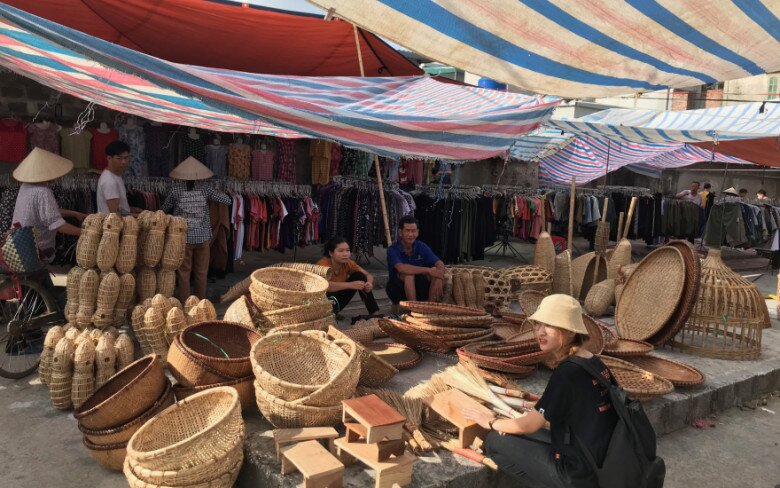
In the last decade or so, Cho Thong market has added a new, vibrant offering: various types of ornamental plants. Most of these plants are affordable, ranging from a few hundred thousand to a few million Vietnamese Dong per plant. The plant section in the market is diverse, sourcing its products from famous craft villages in the district, such as Tan Lap, Bach Thuan, and Phu Sa, as well as from other craft villages in the province and Nam Dinh. This addition has created a colorful and vibrant atmosphere, attracting many locals to shop for greenery to beautify their homes.
Currently, Cho Thong market is ranked as a second-class market, being the largest in Vu Thu district in terms of scale and the number of traders. It is not just a hub for buying and selling agricultural products and commodities but also a significant cultural space that preserves and promotes the unique cultural identity, customs, and traditions of the local people.
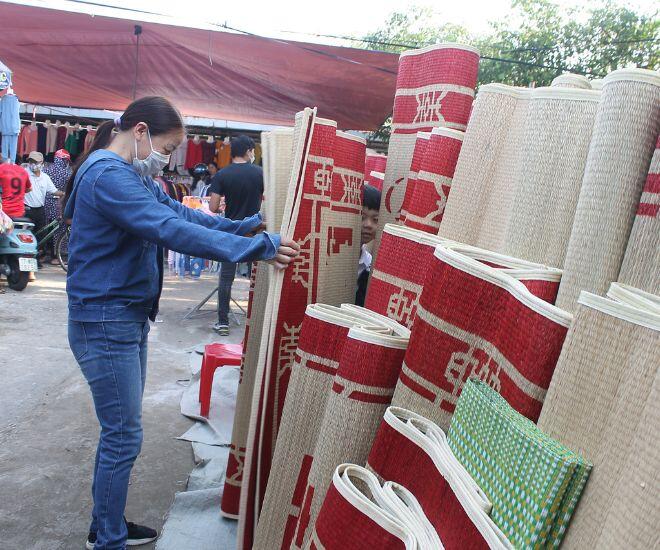
Recognizing its importance, the Vu Thu district has been allocating resources and attention to investing in Cho Thong market. Notably, the provincial project for Competitive Livestock and Food Safety (Lifsap) has funded the construction of a section for selling fresh produce, improving the market’s food safety and hygiene standards. In the future, the district plans to mobilize more resources to re-plan, upgrade, and modernize the market’s infrastructure, ensuring environmental sanitation and convenience for trading activities while preserving the traditional charm of this authentic rural market.
Cho Thong market is not just a shopping destination; it is a place where visitors can connect with the soul of Northern Vietnam’s rural culture, where traditional values endure amidst the currents of modern times.
5 Updo Hairstyles to Elevate Your Ao Dai Look and Beauty this Tet 2025
The Lunar New Year 2025 is just around the corner, and alongside the graceful ao dai outfits, choosing the right hairstyle is a top priority for women. Among the myriad of hairstyles, the bun always takes the crown due to its elegant, chic, and versatile nature, accentuating the beauty of Vietnamese women.



































